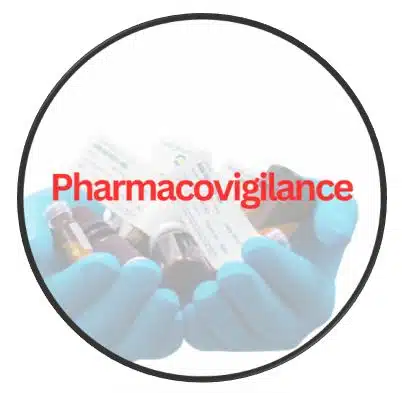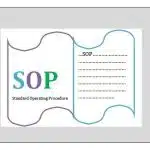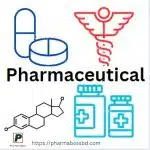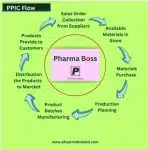Discover the importance of pharmacovigilance in healthcare. Learn “What is Pharmacovigilance? and its role in detecting, assessing, and preventing adverse drug effects, ensuring patient safety and improving medication use.
Table of Contents
Definition of Pharmacovigilance
Pharmacovigilance is a healthcare branch that focuses on discovering, assessing, understanding, and preventing adverse effects and other medication-related problems. It involves collecting, monitoring, analyzing, and reporting information about the safety and effectiveness of specific medications. The primary goal of pharmacovigilance is to ensure patient safety by identifying and minimizing the risks associated with pharmaceutical products. It plays a crucial role in post-marketing surveillance, as clinical trials conducted during the medication development process may not always capture rare or long-term adverse effects.

Aspects of Pharmacovigilance
There are several important aspects of pharmacovigilance, including Adverse Drug Reaction (ADR) reporting. Healthcare professionals, patients, and medication manufacturers are encouraged to report any suspected adverse reactions to non-supervisory authorities. These reports help in the ongoing evaluation of a medication’s safety profile.
Signal Detection
Signal detection is another critical aspect of pharmacovigilance. Experts use various methods, such as data mining, statistical analysis, and literature review, to identify potential safety signals. These signals indicate a possible association between medication and an adverse event and require further investigation.
Risk Assessment and Management
Risk assessment and management are also essential in pharmacovigilance. It involves assessing the potential risks associated with specific medications or medication classes. Based on this assessment, non-supervisory authorities may update product labeling, issue warnings, or even withdraw medication from the market if the risks outweigh the benefits.
It also considers the benefits and risks of specific medications to ensure that the benefits outweigh the potential risks for the target population. This evaluation helps healthcare professionals and non-supervisory bodies make informed decisions regarding medication safety and efficacy.
Countries and regions have established pharmacovigilance systems, such as the U.S. FDA’s Adverse Event Reporting System (FAERS) and the European Medicines Agency’s Vigilance, to collect and analyze safety data from healthcare providers, patients, and other sources. Pharmacovigilance plays a critical role in securing public health by continuously monitoring and assessing the safety profiles of medications on the market. It contributes to the identification of new safety concerns, facilitates informed decision-making by healthcare professionals and non-supervisory agencies, and helps improve patient care and drug safety. Pharmacovigilance
Types of Pharmacovigilance
There are several types of pharmacovigilance activities, each serving a specific purpose in ensuring the safety of medicines. Here are some key types of pharmacovigilance:
1. Spontaneous Reporting:
This is the most common form of pharmacovigilance. Healthcare professionals and sometimes patients voluntarily report adverse drug reactions to regulatory authorities. These reports contribute to the ongoing safety monitoring of drugs.
2. Clinical Trials Monitoring:
During the development of new drugs, clinical trials are conducted to assess their safety and efficacy. Pharmacovigilance activities during clinical trials involve systematic monitoring and reporting of adverse events to regulatory authorities.
3. Post-Marketing Surveillance:
After a drug is approved and on the market, post-marketing surveillance continues to monitor its safety in larger populations. This includes analyzing data from spontaneous reports, medical literature, electronic health records, and other sources to identify and assess potential safety issues.
4. Risk Management Plans (RMPs):
Regulatory authorities may require pharmaceutical companies to develop risk management plans for certain drugs. RMPs outline strategies to identify, characterize, and minimize risks associated with a specific drug.
5. Signal Detection:
Signal detection involves the systematic process of identifying new safety signals or potential safety concerns related to a drug. This can be done through data mining, statistical analysis, and review of scientific literature.
6. Pharmacovigilance Inspections:
Regulatory authorities may conduct inspections of pharmaceutical companies to ensure compliance with pharmacovigilance regulations and to verify the quality and completeness of safety data.
7. Pharmacovigilance Communication:
Timely communication of safety information to healthcare professionals and the public is crucial. This includes issuing safety alerts, updating product labels, and providing educational materials to ensure the safe and effective use of drugs.
8. Pharmacovigilance in Special Populations:
Some pharmacovigilance efforts focus on specific populations, such as pregnant women, children, and the elderly, to monitor the safety of drugs in these groups.
9. Vaccine Safety Surveillance:
Given the importance of vaccines in public health, there is a specific focus on monitoring and ensuring the safety of vaccines through pharmacovigilance activities.
10. Collaboration and Information Sharing:
Pharmacovigilance involves collaboration among regulatory agencies, pharmaceutical companies, healthcare professionals, and patients. Information sharing is essential to enhance the overall understanding of drug safety.
These types of pharmacovigilance activities work together to create a comprehensive system for monitoring and ensuring the safety of pharmaceutical products throughout their lifecycle.
Conclusion
In conclusion, pharmacovigilance is a vital component of healthcare that focuses on ensuring patient safety by monitoring, detecting, and assessing the risks and adverse effects associated with pharmaceutical products. Through rigorous data collection, analysis, and reporting, it plays a crucial role in post-marketing surveillance, enabling early detection of potential safety issues and facilitating informed decision-making by healthcare professionals and regulatory authorities. By constantly evaluating the benefits and risks of medications, pharmacovigilance helps enhance patient care and medication safety, ultimately contributing to the protection of public health.
Please Read Also: GMP Guidelines for Pharmaceutical Industry

Abdus Sobhan Salim is professional experienced pharmacist in pharmaceuticals, author and founder of pharmabossbd.com, the first Bangladeshi pharmaceutical blogger since 2019.



